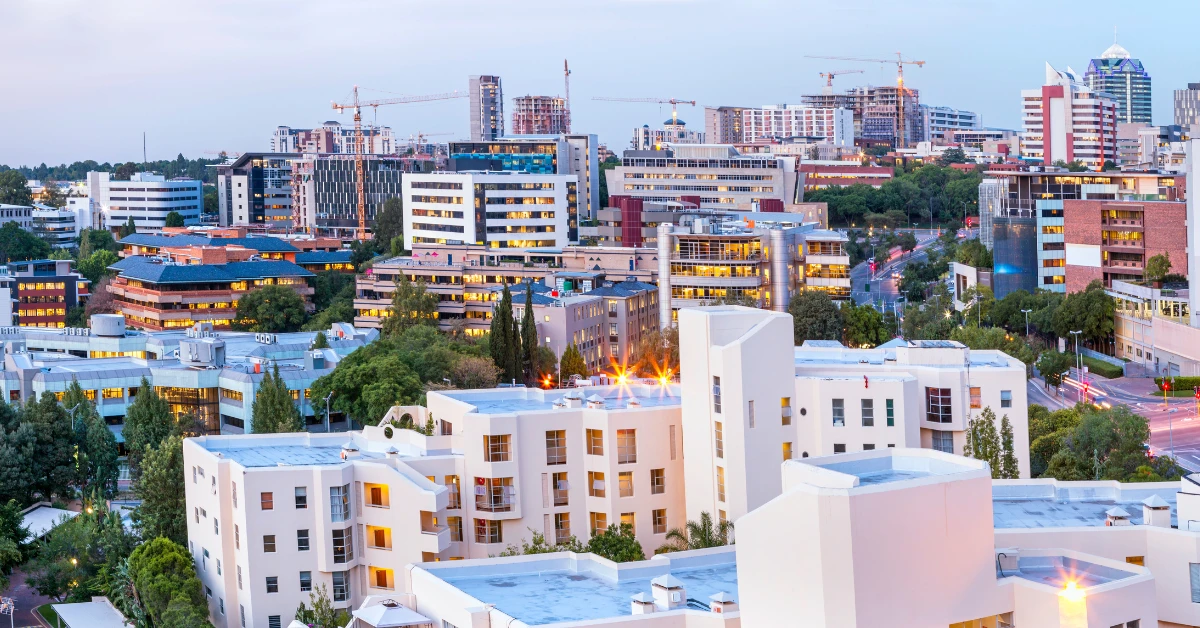The Best Guide To Johannesburg North Attractions
The Best Guide To Johannesburg North Attractions
Blog Article
The Of Johannesburg North Attractions
Table of ContentsJohannesburg North Attractions Can Be Fun For AnyoneThe Greatest Guide To Johannesburg North AttractionsJohannesburg North Attractions - TruthsThe Single Strategy To Use For Johannesburg North AttractionsNot known Details About Johannesburg North Attractions Getting My Johannesburg North Attractions To Work
The city owes its place to the existence of a a lot more priceless resource: gold. The city grew on the side of the Witwatersrand Key Coral reef, a below ground stratum of gold-bearing quartz-silica conglomerate that arcs for numerous miles underneath the Highveld. The majority of the gold mines in the city discontinued operation in the 1970s, but in its day the Witwatersrand gold sector represented greater than 40 percent of the world's yearly gold manufacturing.Johannesburg has a warm environment. Summer temperature levels average regarding 75 F (24 C); winter months temperature levels average regarding 55 F (13 C) and only sometimes dip below cold. The city enjoys regarding 8 hours of sunshine per day in both winter months and summer. Rain averages concerning 28 inches (700 millimetres) per annum, but the complete differs considerably from year to year.
What rainfall the city obtains drops nearly exclusively in the summer months, frequently in stunning late-afternoon electric storms., where lots of citizens still count on coal for gas.

Fascination About Johannesburg North Attractions
The equilibrium of the city is occupied by whites. Lodging differs in character and high quality. Soweto is notorious for its countless rows of municipally constructed, two-room matchbox homes, yet it additionally has a couple of thriving enclaves along with brimming squatter camps, where tens of thousands live without water, electrical energy, or cleanliness centers.
Physical development, although rather limited by transport, continued swiftly as immigration to South Africa, and Johannesburg in particular, boosted considerably.
A lot of inadequate suburbs were combined, with poor blacks and whites cohabiting, although the well-off suburbs were typically reserved for whites. This altered with the political election of the National Celebration in the 1948 elections, who began to formalise the system called racism. Discrimination officially marked which residential areas each race could live in under the Group Areas Act.
The approximated population of the area is 200,000, [] but the variety of people staying in the central city on an informal basis is unknown, as numerous are illegal aliens. The majority of higher-income residents and white individuals have transferred to the northern suburban areas and have been look at this now changed by lower-income black individuals. The joblessness, education, and age accounts of the area are all unidentified, due to the difficulty of acquiring trusted information about the area.
Johannesburg North Attractions for Dummies
Yeoville and Bellevue have a mix of apartment structures and single household devices on little whole lots. The area lies on a mountainous divide that ranges from eastern to west. One of the most conspicuous geographic attribute is Observatory Ridge, which is called for the huge observatory situated on it. The recreational areas are no much longer used, due to security problems.

An Unbiased View of Johannesburg North Attractions
R. Tambo International Airport Terminal). The eastern suburbs are some of the oldest areas of Johannesburg, there are huge neighborhoods of Jewish and other European histories, most of the populace is English speaking. There are 3 golf training courses as well as a number of safeguarded ridges with viewsites. There are numerous well-developed and up-market home entertainment and shopping locations in the eastern such as the Eastgate Shopping Center and the Greenstone shopping center.
The location is mainly made up of old "matchbox" homes, or four-room houses constructed by the government, that were constructed to give inexpensive holiday accommodation for black workers throughout discrimination. Soweto is an abbreviation, representing "South Western Townships". Street after street in this area is lined with matchboxes; however, there are a couple of smaller sized locations where flourishing Sowetans have built houses that are more similar in read stature with those in more upscale suburban areas.
Hostels are another popular physical function of Soweto. Initially constructed to house male migrant workers, several have been enhanced as homes for pairs and households. The N1 Western Bypass skirts the eastern limit of Soweto. The suburban area was not historically enabled to create employment centres within the location, so nearly all of its locals are travelers to other components of the city.
The Ultimate Guide To Johannesburg North Attractions
The residential areas in the northern residential areas are generally official, with anchor no substantial areas of casual real estate, or housing that lacks a permanent framework. This is a well established location, there is a fad of land use adjustment from domestic to industrial, especially along major arterial roadways and around well-known nodes.
The area is well linked to roadway networks, especially along the north-south axis developed by the M1 and N1. Roads to the eastern and west are much less well developed, as there are no highways travelling because direction. In the direction of the north border of the city, the thickness of advancement reduces, leaving large areas of untaught land around Midrand.
A Biased View of Johannesburg North Attractions
, which is situated on a hillside ignoring the inner city and Hillbrow.
Report this page